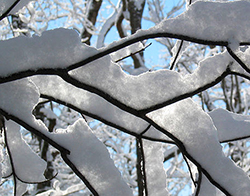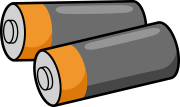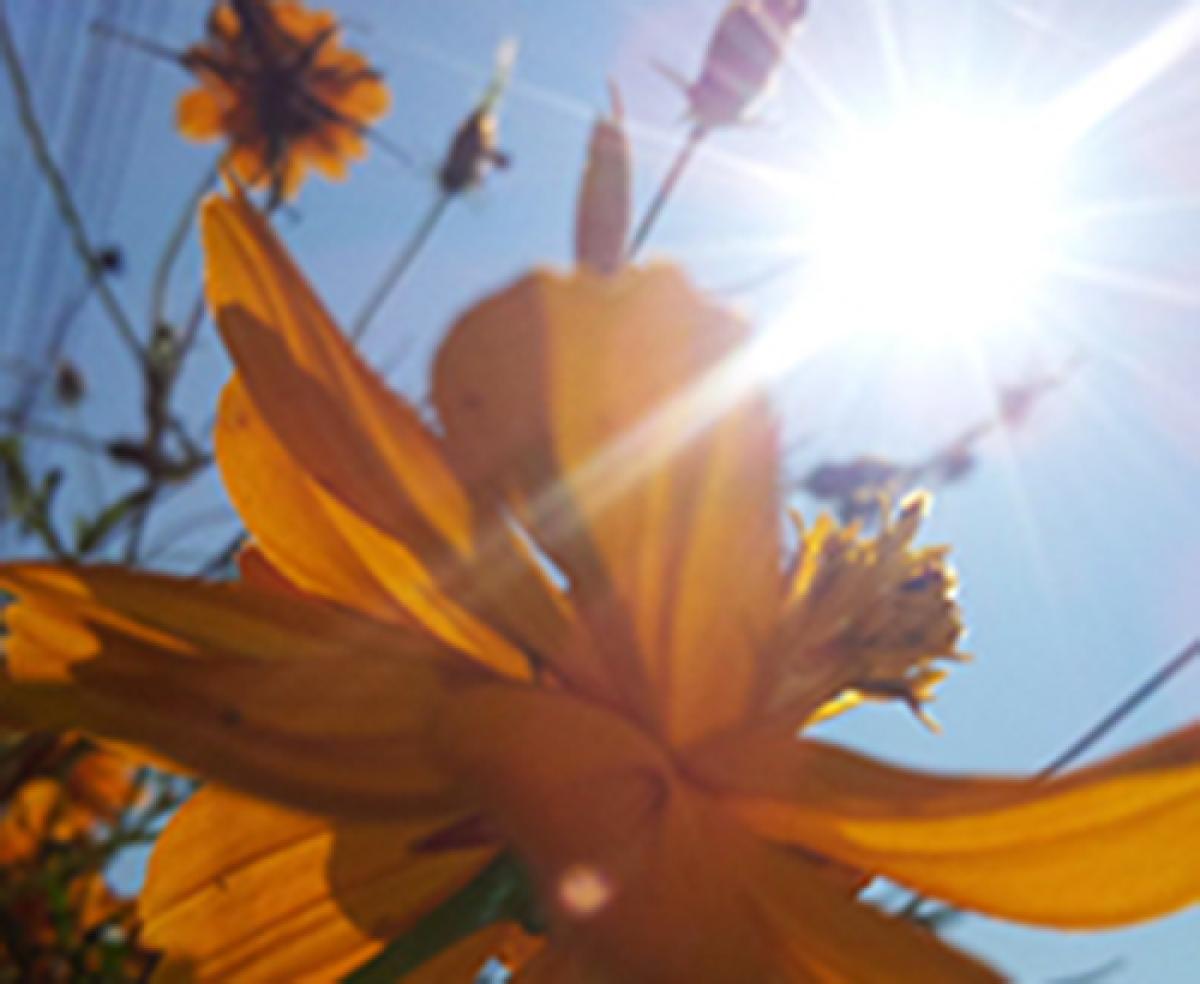Tilt of the Earth Activity
 The concepts of Earth’s revolution and tilt can be difficult ones for learners of all ages. This hands-on activity is designed to take some of the confusion away.
The concepts of Earth’s revolution and tilt can be difficult ones for learners of all ages. This hands-on activity is designed to take some of the confusion away.
Students should already have prerequisite knowledge that Earth revolves, or orbits, around the Sun, our nearest star. Students should already know about the equator, which divides the Earth into northern and southern hemispheres, and about the poles and the axis, upon which Earth rotates, or turns, approximately every 24 hours.
Tips for Classroom Implementation

Time Required: Approximately 60 minutes
Classroom set-up: This activity requires a larger table surface area than a standard student desk- it is recommended that desks be grouped together to create a larger surface area. If your classroom has tables, this activity is ideal if the two tables are placed together.
Tips
- After purchasing the tap lights, be sure that the batteries inside each are in good working order!
- Before beginning the guided practice of this lesson, be sure to keep all materials ready to pass to each table. The instructor can put each group’s materials in tubs or big bags near each table. Therefore, one student per team can get all the materials needed for the experiment. The teacher will save time during transition to guided practice.
- Modeling is vital for this experiment to help students accurately locate the proper tilt angle and set the sphere down on the base. If your classroom has a document camera system, modeling the construction of the sphere and base, and placement of the toothpick can be done under a document camera in real time.
- Also, teachers can have written step-by-step directions of the experiment available (if needed).
- During the experiment, teachers can also scaffold their students’ thinking by asking questions about the seasons and the amount of sunlight that is present at each season.
Extensions
 Students can explore the possibilities of what would happen if the Earth had no tilt at all, or they can mimic the extreme tilt of Uranus. What kind of seasons would these scenarios create?
Students can explore the possibilities of what would happen if the Earth had no tilt at all, or they can mimic the extreme tilt of Uranus. What kind of seasons would these scenarios create?- Challenge students with the fact that the Earth is technically physically closer to the Sun during the Northern Hemisphere’s winter season, and farther away physically in the summer. If so, then why are summers in the Northern Hemisphere warmer and why are summer days longer?
- Engage students with the fact that the Earth revolves around the Sun in a roughly circular fashion, not elliptically as many perceive it.
- Question students about regions of the Earth near the equator. Based on their experiences with the model Earth in the activity, what might the climate be like near the equator? Is the amount of sunlight intensity at the equator changing, or is it fairly constant? Does land near the equator experience temperature-based seasons?
Objective
- Students will develop a basic understanding that the tilt of the Earth, along with its orbit (revolution) around the Sun contributes to the cause of seasons by doing a hands-on experiment, writing observations, and answering questions in their Science notebooks.
Standards
Arizona Science Standards
Strand 1: Inquiry Process
Concept 1: Observations, Questions, and Hypotheses
Formulate predictions, questions, or hypotheses based on observations. Locate appropriate resources.
- PO 1. Formulate a relevant question through observations that can be tested by an investigation.
(See M05-S2C1-01)
- PO 2. Formulate predictions in the realm of science based on observed cause and effect relationships.
Concept 2: Scientific Testing (Investigating and Modeling)
Design and conduct controlled investigations.
- PO 1. Demonstrate safe behavior and appropriate procedures (e.g., use and care of technology, materials, organisms) in all science inquiry.
- PO 3. Conduct simple investigations (e.g., related to forces and motion, Earth processes) based on student-developed questions in life, physical, and Earth and space sciences.
- PO 4. Measure using appropriate tools (e.g., ruler, scale, balance) and units of measure (i.e., metric, U.S. customary).
- PO 5. Record data in an organized and appropriate format (e.g., t-chart, table, list, written log).
Concept 3: Analysis and Conclusions
Analyze and interpret data to explain correlations and results; formulate new questions.
- PO 1. Analyze data obtained in a scientific investigation to identify trends and form conclusions.
- PO 2. Analyze whether the data is consistent with the proposed explanation that motivated the investigation.
- PO 3. Evaluate the reasonableness of the outcome of an investigation.
- PO 4. Develop new investigations and predictions based on questions that arise from the findings of an investigation.
- PO 5. Identify possible relationships between variables in simple investigations (e.g., time and distance; incline and mass of object).
Concept 4: Communication
Communicate results of investigations.
- PO 1. Communicate verbally or in writing the results of an inquiry.
Strand 6: Earth and Space Science
Concept 2: Earth’s Processes and Systems
Understand the processes acting on the Earth and their interaction with the Earth systems.
- PO 3. Distinguish between revolution and rotation.
Common Core Standards
English Language Arts Standards » Speaking & Listening » Grade 5:
- CCSS.ELA-Literacy.SL.5.1 Engage effectively in a range of collaborative discussions (one-on-one, in groups, and teacher-led) with diverse partners on grade 5 topics and texts, building on others’ ideas and expressing their own clearly.
- CCSS.ELA-Literacy.SL.5.1c Pose and respond to specific questions by making comments that contribute to the discussion and elaborate on the remarks of others.
- CCSS.ELA-Literacy.SL.5.1d Review the key ideas expressed and draw conclusions in light of information and knowledge gained from the discussions.
Presentation of Knowledge and Ideas:
- CCSS.ELA-Literacy.SL.5.4 Report on a topic or text or present an opinion, sequencing ideas logically and using appropriate facts and relevant, descriptive details to support main ideas or themes; speak clearly at an understandable pace.
Next Generation Standards
ESS1.B Earth and the Solar System
- The orbits of the Earth around the Sun, and of the Moon around Earth, together with the rotation of Earth about an axis between its north and south poles, cause observable patterns.
Additional Images from Manisamg via Wikimedia Commons.
Read more about: Seasoned to the Tilt
Bibliographic details:
- Article: Why Do We Have Seasons? - For Teachers
- Author(s): Dr. Biology
- Publisher: Arizona State University School of Life Sciences Ask A Biologist
- Site name: ASU - Ask A Biologist
- Date published: 28 May, 2015
- Date accessed:
- Link: https://askabiologist.asu.edu/seasoned-tilt/tilt-activity-for-teachers
APA Style
Dr. Biology. (Thu, 05/28/2015 - 11:08). Why Do We Have Seasons? - For Teachers. ASU - Ask A Biologist. Retrieved from https://askabiologist.asu.edu/seasoned-tilt/tilt-activity-for-teachers
Chicago Manual of Style
Dr. Biology. "Why Do We Have Seasons? - For Teachers". ASU - Ask A Biologist. 28 May 2015. https://askabiologist.asu.edu/seasoned-tilt/tilt-activity-for-teachers
Dr. Biology. "Why Do We Have Seasons? - For Teachers". ASU - Ask A Biologist. 28 May 2015. ASU - Ask A Biologist, Web. https://askabiologist.asu.edu/seasoned-tilt/tilt-activity-for-teachers
MLA 2017 Style

Be Part of
Ask A Biologist
By volunteering, or simply sending us feedback on the site. Scientists, teachers, writers, illustrators, and translators are all important to the program. If you are interested in helping with the website we have a Volunteers page to get the process started.

